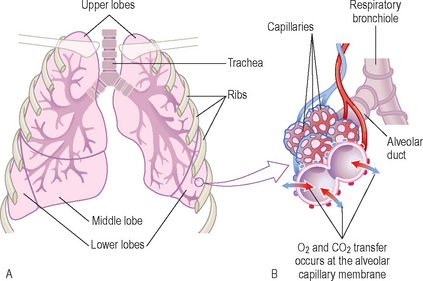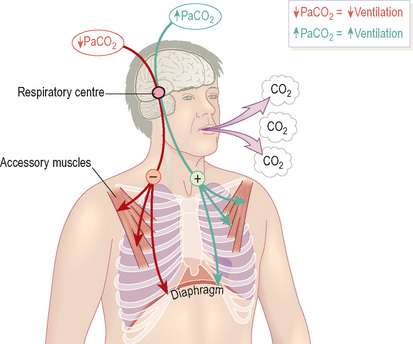1.2 Pulmonary gas exchange
The basics
The exchange takes place between tiny air sacs called alveoli and blood vessels called capillaries. Because they each have extremely thin walls and come into very close contact (the alveolar–capillary membrane), CO2 and O2 are able to move (diffuse) between them (Figure 1).
Pulmonary gas exchange: partial pressures
Note
PaO2 = partial pressure of O2in arterial blood
Carbon dioxide elimination
Ventilation is regulated by an area in the brainstem called the respiratory centre. This area contains specialised receptors that sense the PaCO2 and connect with the muscles involved in breathing. If it is abnormal, the respiratory centre adjusts the rate and depth of breathing accordingly (Figure 2).
Key point
PaCO2is controlled by ventilation and the level of ventilation is adjusted to maintain PaCO2within tight limits.
In patients who rely on hypoxic drive, overzealous correction of hypoxaemia, with supplemental O2, may depress ventilation, leading to a catastrophic rise in PaCO2. Patients with chronic hypercapnia must therefore be given supplemental O2 in a controlled fashion with careful ABG monitoring. The same does not apply to patients with acute hypercapnia.
Haemoglobin oxygen saturation (SO2)
In fact, almost all O2 molecules in blood are bound to a protein called haemoglobin Hb (Figure 3). Because of this, the amount of O2 in blood depends on two factors:
Stay updated, free articles. Join our Telegram channel

Full access? Get Clinical Tree




